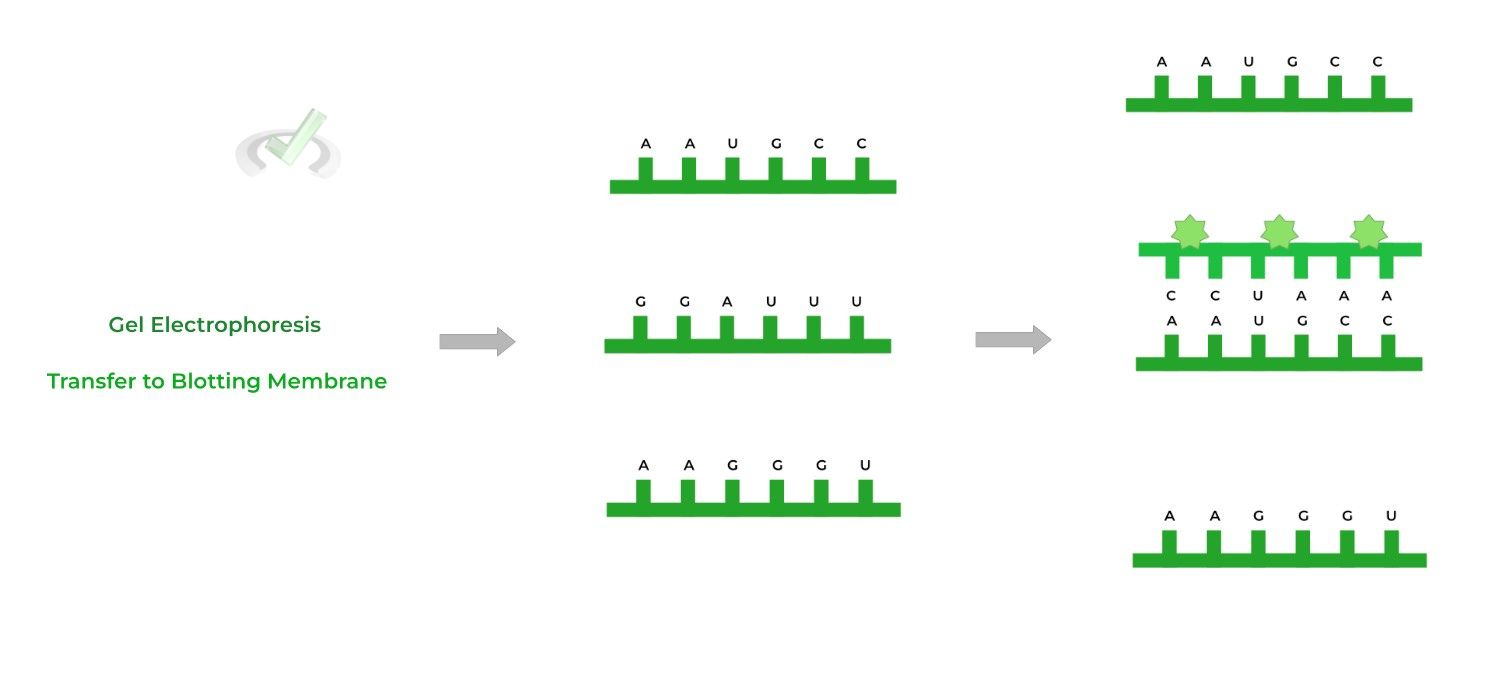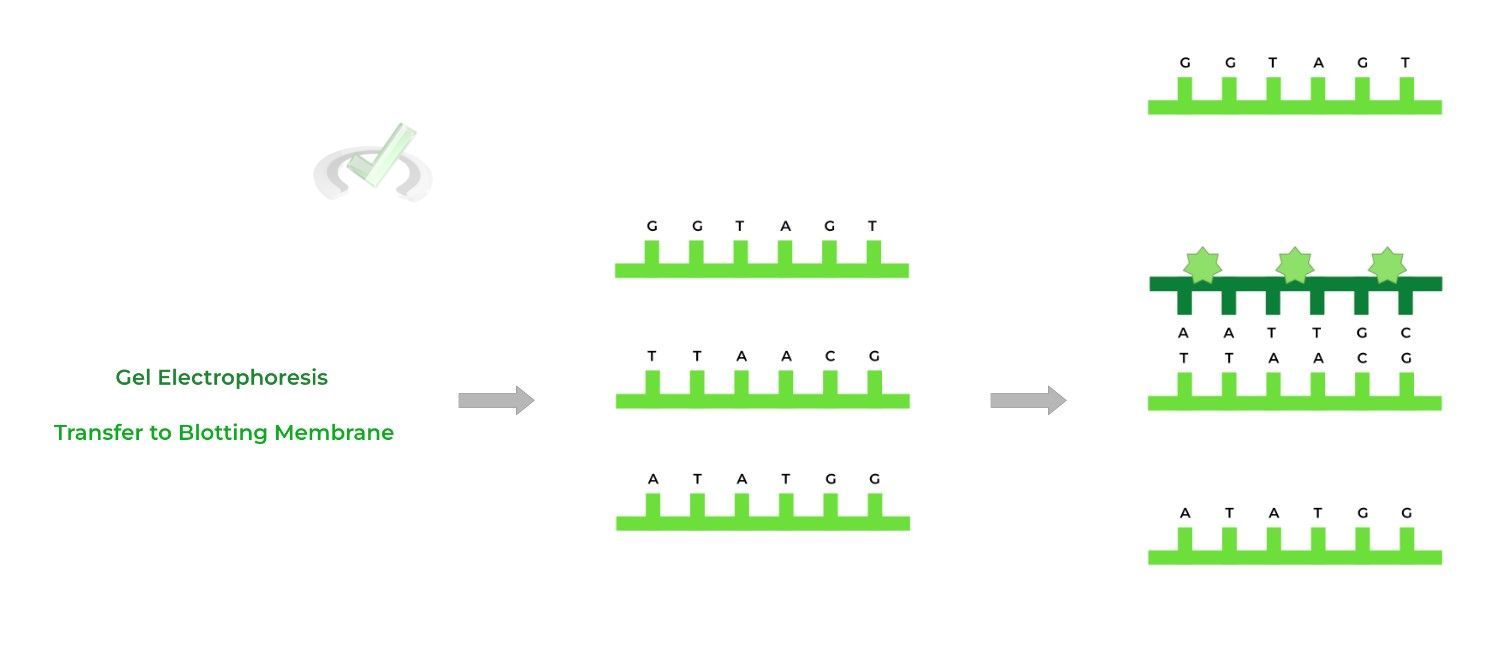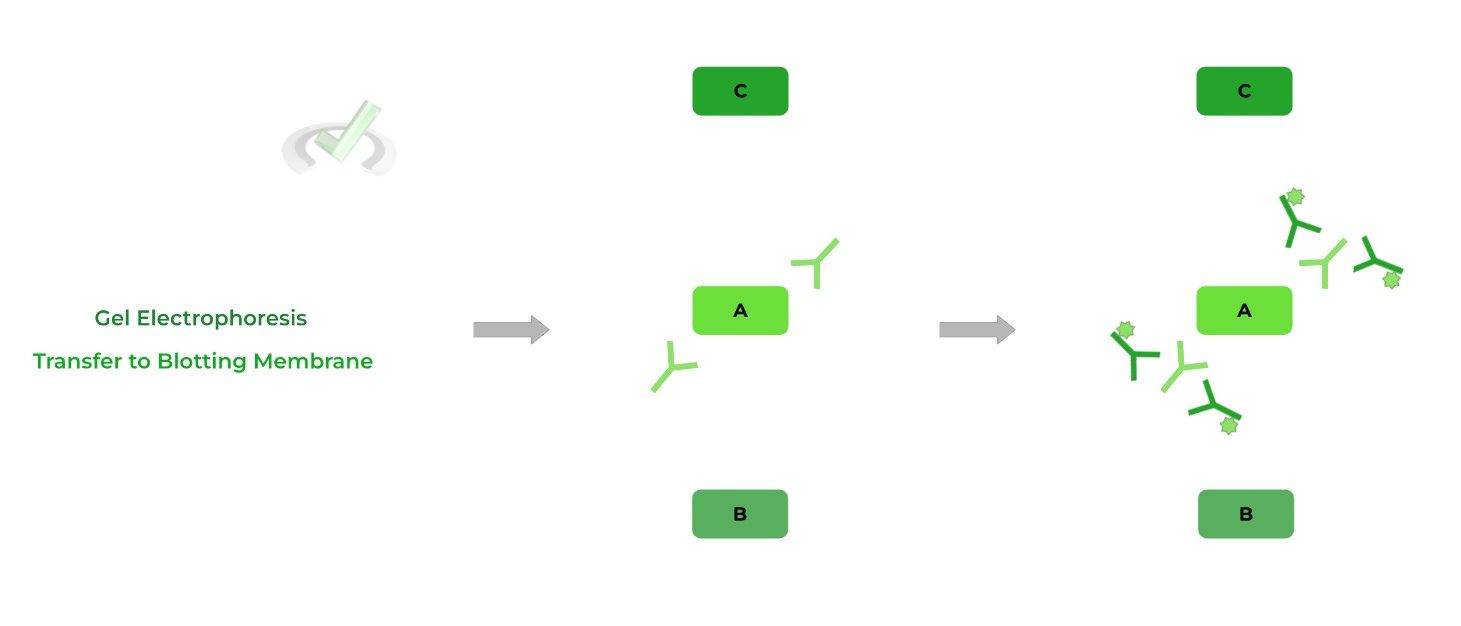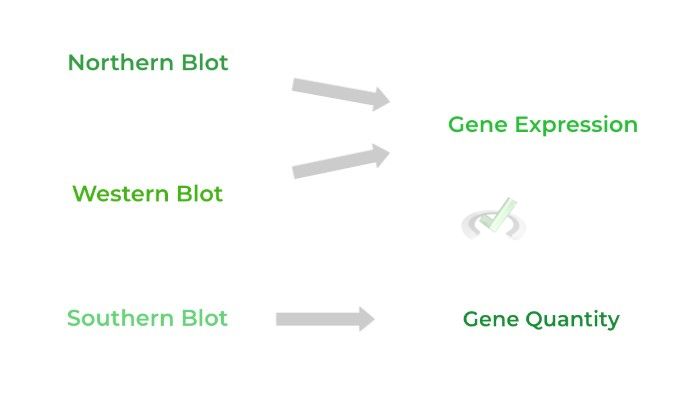I. What is Blotting?
A lot of the times in laboratories, researchers want to see if a certain molecule (i.e. DNA, RNA, protein, etc.) is present within a sample. Say for example we want to know if a certain enzyme is expressed when a cell receptor binds to a hormone!
Though there are many ways to determine the presence of the enzyme, one of the most utilized techniques to do so is blotting! While there are more advanced techniques that have their own advantages, blotting is a great starting point to get a foundation for those other techniques!
There are many different types of blotting each with their own specific variations and molecule of interest. But, when you look and compare them in a grand, macroscale, they all rely on the sample principle, as we’ll discuss further below!
II. Experimental Techniques: Blotting
As mentioned above, it’s best to start first with an overview of the basic principles that encompass blotting techniques before getting into its wide variations.
A. Overview
Blotting is a lab technique utilized in order to identify a molecule of interest, most often a protein or a DNA/RNA sequence within a mixture. There are 3 steps that are involved in this identification process:
The molecules are first separated by gel electrophoresis, and the separated molecules are then transferred to a blotting membrane.
Finally the molecules are treated with a probe to identify the molecule. This probe has specificity for the molecule of interest and a reporter molecule, such as a fluorophore, so that only the molecule of interest can be detected!
B. Types of Blotting
While the section above outlines the fundamental principles of blotting, the wide variations differ in the molecule of interest as well as what type of probe is used. Let’s look at them more closely!
I. Northern Blot
In this variation, the molecule of interest that we're trying to identify is an RNA sequence, usually an mRNA transcript!
After the RNA molecules are separated by gel electrophoresis and transferred to a blotting membrane, an RNA probe with the reporter molecule (usually a fluorophore) is introduced.
Note that the RNA probe has a complementary nucleotide sequence to the RNA molecule of interest so that when introduced, the RNA probe will bind with the RNA molecule of interest via Watson-Crick base pairing.
II. Southern Blot
This variation is actually quite similar to a northern blot; however, in this case, the molecule of interest in a DNA sequence!
Here, the same principles apply: DNA fragments in a mixture are separated and placed in the blotting membrane, the probe and reporter molecule is introduced.
In this case, however, a DNA probe is utilized. Hypothetically, an RNA probe can also be used, but it’s best to keep the probes of the same molecule to minimize complications and maximize sensitivity.
III. Western Blot
In this variation, the molecule of interest is a protein! As such, the utilized probe is a bit more unique where instead an antibody is commonly used! Recall that an antibody is a special type of immune protein that has specificity for an antigen via the variable light and heavy chain!
After gel electrophoresis and membrane blotting, first a primary antibody is introduced which binds to the protein of interest, which is then washed to remove any unbound antibodies.
A secondary antibody is then introduced which binds to the primary antibody and contains the reporter molecule.
While a fluorophore reporter molecule can be directly attached to the primary antibody (called direct detection), the use of a secondary antibody (called indirect detection) is usually utilized more because of its higher sensitivity!
C. Insights from Blotting: Analyzing Gene Expression and Quantity
There are some important insights that can be made from blotting! However, certain blotting variations offer certain insights that differ from other blotting techniques.
The northern and western blot are good indicators for gene expression while the southern blot gives good indication for gene quantity.
This all comes back to the type of molecules that the blots are identifying. The mRNA transcripts and proteins can be used to indicate gene expression while the DNA sequences can only be a quantitative value.
However, there are some limitations to northern and western blots and their ability to indicate gene expression. Circumstances such as RNA or protein degradation can be confounding factors!
Even though the gene is transcriptionally active, the degradation of the RNA transcripts and proteins can invalidate the findings in the northern and western blots.
D. Hybridization
This is an important term to characterize the actions of the DNA and RNA probes utilized in southern and northern blots respectively.
Hybridization simply refers to the ability of DNA and RNA probes with complementary base pairs to bind to DNA and RNA sequences of interest via Watson-Crick base pairing.
This allows for a high degree of specificity when needing to identify the molecule of sequence because only the sequence with complementary base pairing will bind!
III. Bridge/Overlap
We mentioned above that the northern and western blots are good indicators of gene expression while southern blots are not. Why is this the case? This all goes back to the central dogma of molecular biology, as we’ll quickly review and explain below!
I. The Central Dogma of Molecular Biology
This is a fundamental principle in molecular biology which explains how a gene is expressed as a phenotypic trait.
While there are exceptions (such as retroviruses), the central dogma states that DNA sequence encoding a gene is first transcribed to an mRNA transcript. This transcript is then translated to a protein via a ribosome.
The presence of mRNA transcripts and proteins all indicate gene expression because it suggests that the gene is transcriptionally active! However, the mere presence and quantity of the gene, as found in southern blot, can’t be an indicator of gene expression!
Even though the gene is present, it doesn’t mean that the gene is transcriptionally active and being expressed, as this is dependent on various factors such as transcription factors, epigenetics, etc.IV. Wrap Up/Key Terms
Let’s take this time to wrap up & concisely summarize what we covered above in the article!
A. Overview
Blotting is a lab technique that’s utilized to identify a molecule of interest, usually a DNA/RNA sequence or protein within a mixture.
After separating the mixtures via gel electrophoresis and transferring them to a blotting membrane, a probe contains a reporter molecule (usually a fluorophore) which binds to the molecule of interest and makes it visualized!B. Types of Blotting
While the principles are the same, the variations of blotting differ in the molecule of interest as well as what type of probe is utilized.
I. Northern Blot
The molecule of interest for a northern blot is a RNA sequence, most of the time an mRNA transcript.
After separation via gel electrophoresis and transfer to a blotting membrane, a RNA probe with complementary Watson-Crick base pairing and a reporter molecule will bind to the RNA sequence of interest.II. Southern Blot
The molecule of interest for a southern blot is a DNA sequence, often time utilized to detect the presence of a gene sequence.
This process is really exactly the same as the northern blot, except in this case a DNA probe is utilized to minimize complications and maximize sensitivity.III. Western Blot
The molecule of interest for a western blot is a protein, where in this case an antibody is utilized as the probe!
After separation and membrane blot transfer, a primary antibody is introduced which binds to the protein. After washing out unbound primary antibodies, a secondary antibody is introduced which contains the reporter molecule.C. Insights from Blotting
Different insights and conclusions can be made from different blotting variations! The northern and western blot are good indicators for gene expression while the southern blot is a good indicator for gene quantity.
D. Hybridization
This is an important term that refers to the ability of the DNA and RNA probes to bind with the DNA and RNA sequences, as they contain complementary, Watson-Crick base pairing!
IV. Practice
Take a look at these practice questions to see and solidify your understanding!
Sample Practice Question 1
Given a nucleic acid sequence that reads 5’-AUGAAUCCC-3’, which blotting technique should be used and what should be the corresponding probe?
A. Southern Blot; 5’-TACTTAGGG-3’
B. Southern Blot; 5’-GGGATTCAT-3’
C. Northern Blot; 5’-UACUUAGGG-3’
D. Northern Blot; 5’-GGGAUUCAU-3’
Ans. D
First, realize that the molecule of interest is an RNA molecule, which means that a northern blot needs to be done. Furthermore, note that also the corresponding RNA probe should have complementary base pairing, also keeping in mind the antiparallel orientation!
Sample Practice Question 2
Suppose researchers want to determine whether a gene in a cancer cell has been duplicated. Which of the following techniques would be the most direct way to measure this?
A. Western Blot
B. Northern Blot
C. Southern Blot
D. All blots will be equally direct in determining duplication.
Ans. C
Pay close attention to the wording of the question! While all of the blots could theoretically measure the duplication of the gene, the southern blot is the most direct because it binds to the DNA sequence, indicating gene quantity!
A gene can be duplicated but may not be necessarily transcriptionally active, which would invalidate findings in northern and western blots.



 To help you achieve your goal MCAT score, we take turns hosting these
To help you achieve your goal MCAT score, we take turns hosting these 
























